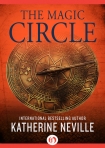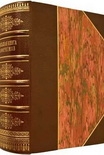The Magic Circle, Katherine Neville [parable of the sower read online .TXT] 📗

- Author: Katherine Neville
Book online «The Magic Circle, Katherine Neville [parable of the sower read online .TXT] 📗». Author Katherine Neville
Miriam of Magdali
When Joseph looked up from this letter, the sun had dipped below the horizon, staining the sea bloodred. The churning fog rolled over the waters like sulfuric fumes rising from the depths. Lovernios stood beside him, his eyes on the fiery vista as if lost in thought, and did not speak.
“There’s something in this tale Miriam hasn’t mentioned,” said Joseph. “While it’s true Jacob’s daughter, Dinah, was one of thirteen children, she wasn’t the thirteenth child born to him. In Torah, birth sequence—at least among the sons of a tribe—is quite important. Dinah was the last child born to Jacob’s elder wife, Leah, but not the last of Jacob’s thirteen.”
“He had more than one wife, then, your ancestor?” asked Lovernios with interest. Polygamy among the Keltoi was rare, and unacceptable within the elite class of Druid.
“Jacob had two wives and two concubines,” said Joseph. “I told you the Master’s memory was remarkable, especially regarding Torah. All the numbers in Torah are significant—for the Hebrew alphabet, like the Greek, is based on numbers. I agree that the Master wanted the story of Dinah to be seen from many angles.”
“Tell me then,” said Lovernios.
It was dusk, and the fog had encased the beach below. It would quickly grow dark, so Lovernios collected some nearby brush and a few branches and twigs, and chopped at the flint he’d extracted from his thong-tied sack, to make a hastily improvised fire. The two men sat on a nearby rock plateau as Joseph recounted the tale.
THE THIRTEENTH TRIBE
The story begins with our ancestor Jacob as a young man. Twice Jacob had tricked his older twin brother Esau out of his birthright. When he learned Esau had threatened to kill him as soon as their father died, Jacob fled the land of Canaan and headed north, to the country of his mother’s tribe. Arriving in the mountains near the Euphrates River, the first thing Jacob saw was a beautiful young shepherdess who brought her sheep to a well, and Jacob fell in love with her. As it proved, she was his own cousin Rachel, the younger daughter of his mother’s brother, Laban. At once Jacob asked for her hand in marriage.
Jacob worked seven years for his uncle to earn Rachel as his bride. But the dawn after his wedding night he learned he’d been tricked: the woman he’d lain with that night—substituted under cover of darkness for Rachel—was her squint-eyed older sister, Leah, for it was the custom in the north to marry off the eldest first. When his uncle Laban offered Jacob Rachel as a second wife, Jacob agreed to pay her dower by toiling seven years more in his uncle’s fields. The number seven is also a key number in our people’s history. God created the world and took his rest within seven days. The number seven marks the fulfillment and completion of all creative undertakings, the number of divine wisdom. It is therefore significant that seven is the birth sequence of Jacob’s only daughter, as are the key events leading up to her birth:
While God ignored Rachel’s desire to have children, her sister Leah gave birth to four sons. Rachel offered to her husband her servant Bilhah, who gave birth to two more sons. Because Jacob no longer came to Leah’s bed, she offered her own servant, Zilpah, who likewise had two sons by Jacob—while the unhappy Rachel still remained barren. But things were about to change.
One day the eldest son, Reuben, found some mandrakes in the wheat fields and brought them to his mother, Leah. Mandrakes, like May-apples, promote conception and are associated with the temptation of Eve. Rachel asked Leah to share them, but Leah would agree only in exchange for Jacob’s restored services as a husband. The desperate Rachel said yes, after which Leah gave birth to two more sons. And then the vital event was about to occur. Leah’s seventh and final child—the eleventh of Jacob’s children—was a girl, who was given the name of Dinah.
Upon Dinah’s birth, Leah’s fertility and Rachel’s barrenness were both at an end. Rachel’s firstborn son Joseph, later viceroy of Egypt, therefore became Jacob’s twelfth child. And the final child was Benjamin, whose birth resulted in Rachel’s death and the end of the family cycle. His number was thirteen.
The sequence in which the children were born, the way each was blessed by Jacob before his death, and even the way in which the tribes were later blessed by Moses in the desert, are all known to be important in the history of our people. But Dinah herself does not reappear in the story until her father Jacob returns from self-imposed exile in the north, and brings his family back into the land of Canaan.
Jacob bought land from the local prince, Hamor, and dug a well that’s still there today at the foot of the sacred Mount Gerizim, and settled in with his family in the land of Canaan. When Dinah went through the wheat fields one day to meet some of the local maidens, Hamor’s son Shechem saw her and wanted her, and he defiled her there in the field. But when Shechem realized he was in love with Dinah, he took her home and asked his father Hamor to arrange that they might marry.
When Hamor went to Dinah’s father and her brothers, he offered to share half his estates if they’d permit this marriage. Jacob and his sons agreed, only if all males of the Canaanite clan would agree to be circumcised, as Jewish covenant requires. But two of Dinah’s brothers were lying—for no sooner had the Canaanite men undergone surgery than Simeon and Levi fell upon their households, killing all the men, removing Dinah forcibly from the house of her captors, looting and destroying the houses, and making off with the women and children, sheep and oxen and material wealth. Jacob’s family was forced to flee Canaan in fear of retribution for this deception and bloody massacre.
We know





Comments (0)